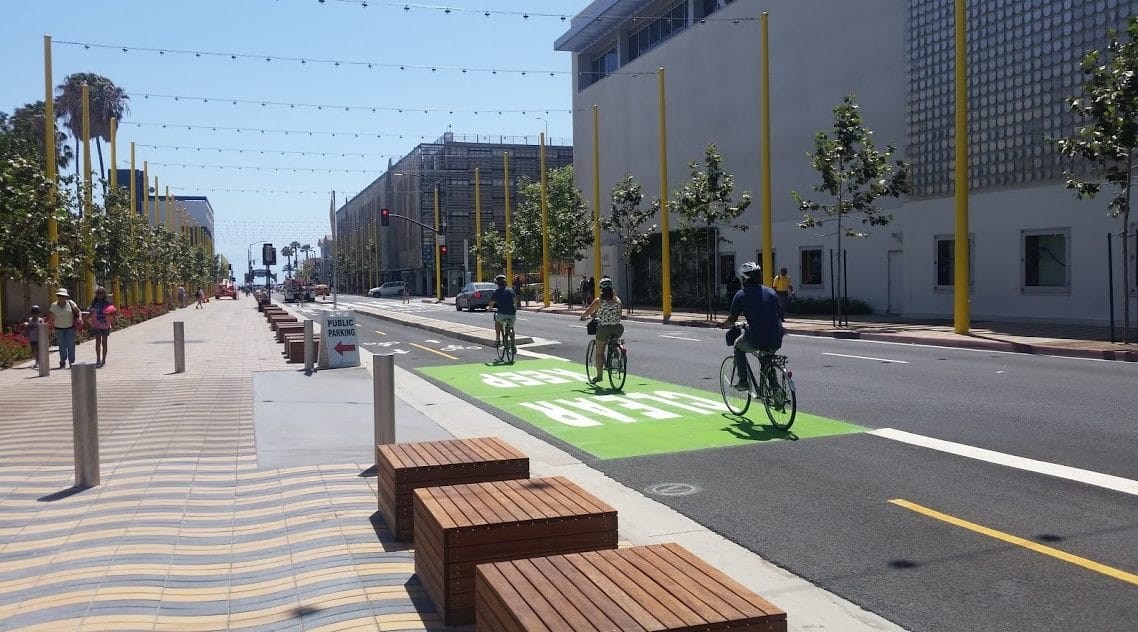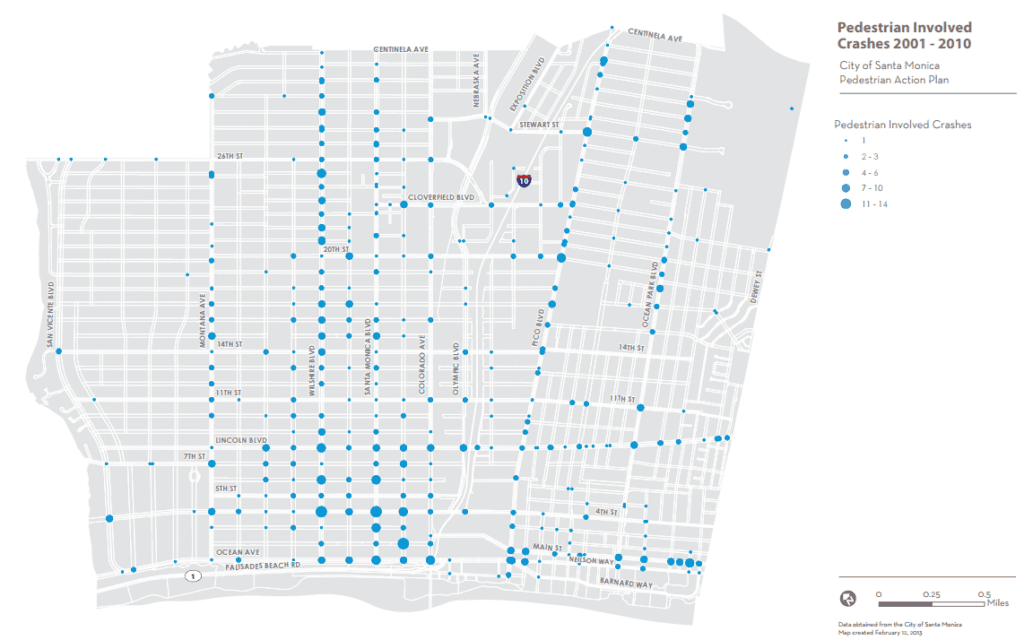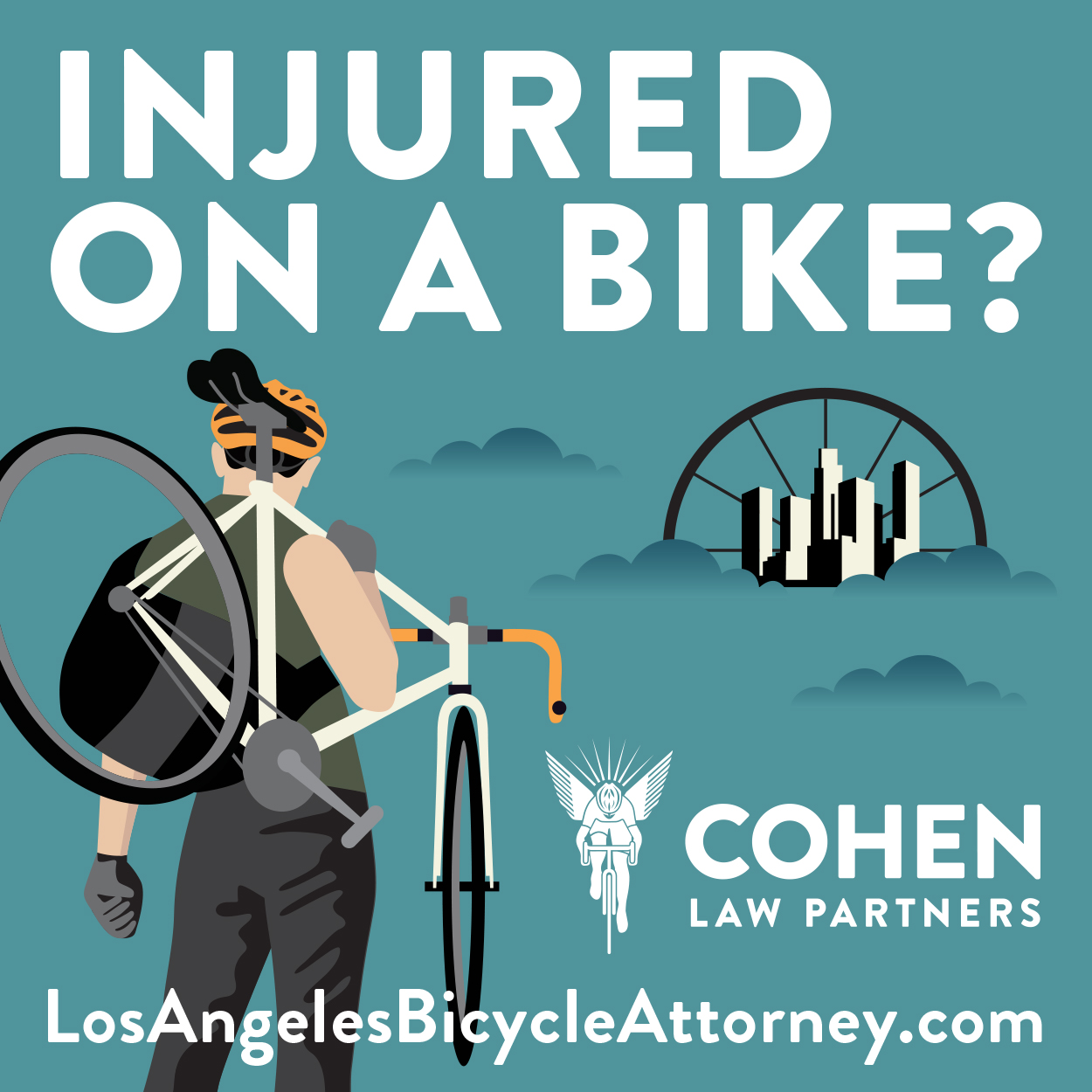
Earlier this week, a woman was killed after she was struck by a driver as she crossed Santa Monica Boulevard at 18th Street during an early morning jog.
Her death was the fifth traffic-related fatality in about as many weeks to rock the beachside city known, in part, for its efforts to encourage visitors, employees, and residents to get out of their cars and bike, walk, or take public transit.
The recent spate of deaths is a shocking reminder that, while Santa Monica has made major strides in improving street safety in recent years, there remains plenty of work left in order for the city to live up to its promise.
“We’ve had wonderful success getting more people biking and walking. The flipside of that is that there are more opportunities for conflict and we need to continue invest to increase safety and prioritize people over cars,” Councilmember Terry O’Day told Santa Monica Next Tuesday.

“We are currently analyzing both historic and new data for a report scheduled to go to Council on May 9th that will seek to pinpoint, to the extent possible, how these incidents fit into larger patterns here in Santa Monica and beyond,” city officials wrote in an email to Santa Monica Next Friday. Read city officials’ entire response here.
“If conditions have changed, we will have to adapt and adjust our policy initiatives to meet those conditions. Achieving a goal as ambitious as Vision Zero will require flexibility, tenacity, commitment of resources, consistent enforcement, vigilant monitoring and community participation,” officials wrote. “There are no magic answers, but Santa Monica is part of a national movement committed to no longer tolerate senseless and tragic loss of life and life-altering injuries as tragic ‘accidents.'”
In February, 2016, the Santa Monica City Council unanimously adopted the Pedestrian Action Plan, which enshrined the city’s commitment to “Vision Zero,” the principle that the city’s top priority should be the elimination of major injuries and deaths resulting from traffic crashes.
“Vision Zero Santa Monica acts as an agreement between the community and City to coordinate efforts and concentrate on the elimination of traffic injuries and fatalities. It obligates the City of Santa Monica to consistently prioritize road user safety, and calls for accountability from all users of the roadway,” according to the Pedestrian Action Plan.
According to the 265-page Pedestrian Action Plan, which takes a comprehensive look at walking in the city, obstacles to increasing the number of people who walk, and strategies to improve safety, Santa Monica averaged about 100 reported injury collisions involving pedestrians every year between 2001 and 2012.
Still, the city has seen real success in making some streets safer in the city. In 2008, a roughly one-mile stretch of Ocean Park Boulevard, between Lincoln and Cloverfield Boulevard, got the road diet treatment.
The four-lane street, which passes by John Adams Middle School and nearby Will Rogers Elementary School was reduced to two lanes. Bike lanes and a median turning lane were added. Since then, drivers are not driving as fast along that stretch and crashes have dropped by 65 percent, according to a report by the U.S. Department of Transportation’s Federal Highway Administration [PDF]. Major injuries resulting from crashes along that stretch of Ocean Park have also dropped by 60 percent.
Santa Monica has made similar improvements along Main Street, the stretch of Colorado from 5th Street to the Pier, and along 2nd Street in Downtown.
The city also recently installed a number of “scramble crossings” in Downtown Santa Monica, allowing pedestrians to cross in all directions on a dedicated ped-only signal during the cycle, while pedestrians are prohibited from crossing when vehicles are moving through the intersection. Drivers, however, aren’t prevented from making right turns during the pedestrian crossing cycle.
“Projects in the Pedestrian Action Plan are also underway consistent with the City’s adopted Capital Improvement Program. Planning and design of new sidewalks near the Bergamot/26th Street Expo Station is underway, along with additional pedestrian lighting near the 17th Street/SMC Station,” officials said. “Just last month the Council approved plans for construction of curb bulb outs near Edison Language Academy in the Pico Neighborhood, which will start construction later this year.”
City officials also pointed to the many education programs, enforcement operations, and community events that are focused on traffic safety, among them is included the “Move Safe” campaign, which features PSA videos such as this one:
It’s worth noting that the dozen videos city officials pointed to as part of the official road safety awareness campaign almost exclusively focused on the behaviors of people walking, biking, or skateboarding. There is almost nothing about bad driving behaviors.
Streets like Lincoln and Santa Monica Boulevards, where two of the five people recently killed were hit, have remained streets where the priority largely remains moving vehicle traffic quickly. The intersection on Santa Monica Boulevard at 18th Street, the site of the most recent fatal collision, has a blinking pedestrian crossing sign. Though a report of someone on social media said that the blinking lights weren’t functioning last week.
https://twitter.com/StevenMWhite/status/849628018406551553
City officials said they are currently investigating the collision and would be looking at “the existing and planned crosswalk enhancement systems there and in other locations in the City.”
Routes like the Michigan Avenue Greenway, which serves as a ped/bike-friendly alternative to Pico or Olympic Boulevard, still requires people on bikes to dismount and push the “beg button” or wait for a car to pull up to the intersection in order to get the signal to change.
The report on the Ocean Park road diet notes that previous attempts to make the street safer, using signage alone, including crossing signs with blinking lights, failed to actually improve safety on the street. It was only when the street was redesigned that safety markedly improved.
Santa Monica City Councilmember Kevin McKeown, who was one of the council members who pushed to assure “Vision Zero” was included in the Pedestrian Action Plan, said in an email to Santa Monica Next Tuesday, “I have just heard of the latest fatality while on spring break vacation in Amsterdam, where pedestrians, bikes, motor scooters, cars, and trams all share the streets in chaotic safety,” he said in response to a request for comment about the fatal collision on Santa Monica Boulevard.
“I think the key difference is vehicle speed,” he said.
City staff is currently moving forward with plans to redesign Lincoln as a safer street. The Lincoln Neighborhood Corridor (LiNC), which was approved by the Planning Commission in February, project would make safety improvements at several key crossings, including Lincoln and Hill, where one of the five people recently killed was hit while crossing the street.
There are no concrete plans yet for any major safety improvements along Santa Monica Boulevard. And other streets in Santa Monica, like Olympic Boulevard, where the speed limit hits 40 mile per hour, remain de facto highways. The city is actually limited by state law in its ability to reduce speed limits, but as the Ocean Park Boulevard road diet demonstrates, street design is much more effective at getting vehicle traffic to move at safer speeds than speed limit signs.
City Manager Rick Cole noted that Santa Monica isn’t alone in seeing a spike in fatal crashes, citing a Los Angeles Times article that showed Los Angeles saw a spike in the number of people killed in traffic in 2016. Like Santa Monica, Los Angeles had recently adopted a “Vision Zero” policy.
“In 2016, the first full year that Garcetti’s Vision Zero policy was in effect in L.A., 260 people were killed in traffic crashes on city streets, an increase of almost 43 [percent] over the previous year,” the L.A. Times reported.
In response to the news, the L.A. City Council’s Transportation Committee voted to recommend the city spend 60 percent of the $66 million it will receive as part of the local return of Measure M money toward its “Vision Zero” goals while allocating the other 40 percent to related infrastructure improvements, like better bike networks, sidewalk improvements along high-risk corridors, and better crossings for pedestrians.
Santa Monica’s annual budget discussion is a few months away and some in the community have begun calling for the city to allocate funds to begin implementation of the “Vision Zero” strategies outlined in the Pedestrian Action Plan, which include education, but also expensive redesigning of high-risk streets.
With improving mobility identified by the City Council as one of the city’s top five priorities, there is clearly support on the City Council for taking more aggressive action to improve street safety.
O’Day was one of three council members, including Mayor Ted Winterer and Councilmember Pam O’Connor, who placed an item on the council’s February 14 agenda calling for an update on just what the city is doing to implement the Bike Action Plan and the Pedestrian Action Plan.
“This is the time to take a look at how all of those plans now come together and work together. Many of the projects listed in the [Bike] Action Plan have been implemented and yet we know that there are some gaps that we didn’t foresee at the time we wrote that plan,” O’Day said at the February 14 meeting.
“I think it’s important to create a list of what those gaps are, to think about what the next steps can be for our [Bike] Action Plan, and to create a vision that incorporates our ‘Vision Zero’ objectives in our Pedestrian Action Plan,” he said.
The following month — and the largely preventable deaths of five people — has underscored the urgency of the Council’s call to ramp up the city’s implementation of “Vision Zero.” Now it’s up to city to put up enough money to make real change possible.


